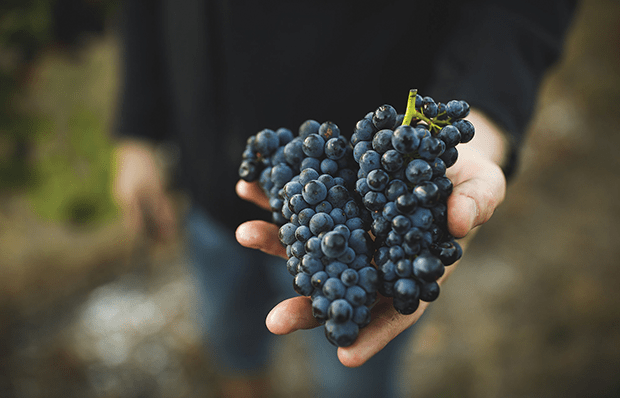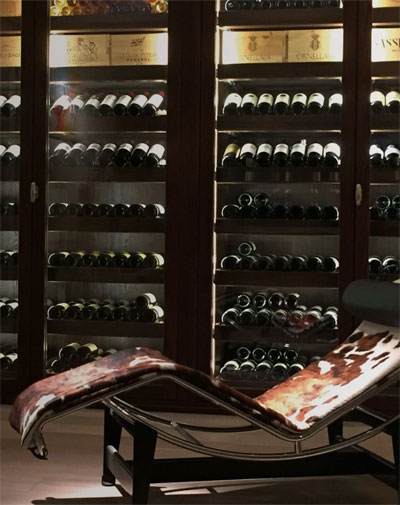
COUNTRY
France

REGION

GRAPE VARIETY
Pinot Noir

VINTAGE
2020
AVAILABLE STOCK: 1 BOTTLES

COUNTRY
France

REGION

GRAPE VARIETY
Pinot Noir

VINTAGE
2020
Country: France, Burgundy, Chambertin
AWARDS
Robert Parker Wine Advocate: 96-98/100
Decanter: 99/100
Allen Meadows Burghound: 93-96/100
Jaspers Morris Inside Bourgoundy: 95-99/100
John Gilman: 98/100
Viticulture & Winemaking: “Chambertin!... Its name is a prestigious evocation. The place is one of the noblest there is. This nobility, active and alive, renews each summer in the sun, the miracle of nature” - Gaston Roupnel.
This miracle of nature, sensed by Arthur Trapet one fine morning in May 1919, when he decided to buy his first parcel of Chambertin, we want to be worthy of it. 1 ha 90 acres, 3 parcels. The oldest plots were planted in 1919
"The king of the cellar is the 2020 Chambertin Grand Cru, a magical wine in the making that unwinds in the glass with aromas of cherries, blackberries, rich soil tones, espresso roast, rose petals, liquorice, oyster sauce and dark chocolate. Full-bodied, layered and multidimensional, it`s seamless and complete, with huge concentrations, lively acids and rich, velvety tannins, concluding with a long, resonant finish. Well-connected and well-heeled readers will derive immense pleasure in comparing 2020 with the 2019 and 2018 renditions several decades from now."
-Robert Parker Wine Advocate-
Food Pairing: Pairs well with duck, goose and game birds.
DOMAINE TRAPET
With vines in Burgundy and Alsace, Trapet Family aims to translate and pass on all the grape and terroir-expressions as the know-how has been passed down to them from generation to generation.
The Domaine was established by Louis`s son Arthur in 1870 when he began acquiring vineyards and laying the foundations for the present Domaine. The Trapets now have 12 hectares of vines including 1.9 hectares of the hallowed Chambertin.
The Domaine is currently run by Jean-Louis Trapet, son of Jean and cousin of the Rossignol Trapets. He is married to an Alsacienne, Andrée. Jean-Louis moved towards biodynamic farming in the mid-1990s, working first with guru Francois Bouchet and now with Pierre Masson. The Domaine has been certified by Biodivin since 1998 also, he uses no sulphur at harvest or during the vinification and maturation processes, just adding a small dose at bottling.

SHIPPING FEES
For orders €100,00 and
above we deliver free to
your place
For orders below €100,00 delivery
charge €10,00 within city limits.
Country: France, Burgundy, Chambertin
AWARDS
Robert Parker Wine Advocate: 96-98/100
Decanter: 99/100
Allen Meadows Burghound: 93-96/100
Jaspers Morris Inside Bourgoundy: 95-99/100
John Gilman: 98/100
Viticulture & Winemaking: “Chambertin!... Its name is a prestigious evocation. The place is one of the noblest there is. This nobility, active and alive, renews each summer in the sun, the miracle of nature” - Gaston Roupnel.
This miracle of nature, sensed by Arthur Trapet one fine morning in May 1919, when he decided to buy his first parcel of Chambertin, we want to be worthy of it. 1 ha 90 acres, 3 parcels. The oldest plots were planted in 1919
"The king of the cellar is the 2020 Chambertin Grand Cru, a magical wine in the making that unwinds in the glass with aromas of cherries, blackberries, rich soil tones, espresso roast, rose petals, liquorice, oyster sauce and dark chocolate. Full-bodied, layered and multidimensional, it`s seamless and complete, with huge concentrations, lively acids and rich, velvety tannins, concluding with a long, resonant finish. Well-connected and well-heeled readers will derive immense pleasure in comparing 2020 with the 2019 and 2018 renditions several decades from now."
-Robert Parker Wine Advocate-
Food Pairing: Pairs well with duck, goose and game birds.
DOMAINE TRAPET
With vines in Burgundy and Alsace, Trapet Family aims to translate and pass on all the grape and terroir-expressions as the know-how has been passed down to them from generation to generation.
The Domaine was established by Louis`s son Arthur in 1870 when he began acquiring vineyards and laying the foundations for the present Domaine. The Trapets now have 12 hectares of vines including 1.9 hectares of the hallowed Chambertin.
The Domaine is currently run by Jean-Louis Trapet, son of Jean and cousin of the Rossignol Trapets. He is married to an Alsacienne, Andrée. Jean-Louis moved towards biodynamic farming in the mid-1990s, working first with guru Francois Bouchet and now with Pierre Masson. The Domaine has been certified by Biodivin since 1998 also, he uses no sulphur at harvest or during the vinification and maturation processes, just adding a small dose at bottling.

SHIPPING FEES
For orders €100,00 and
above we deliver free to
your place
For orders below €100,00 delivery
charge €10,00 within city limits.














